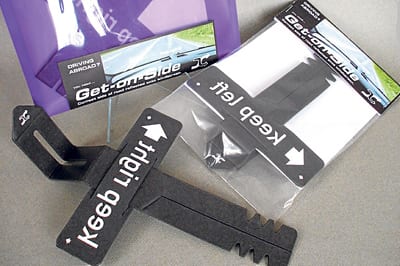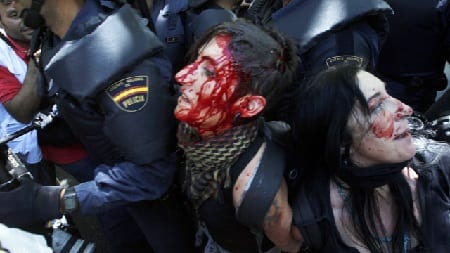By Wendy Williams
IT is the southernmost point of Europe. Where the Atlantic Ocean crashes into the Mediterranean, where the Levante meets the Poniente, and where the narrow Straits of Gibraltar are all that separates Europe from Africa.
For those who have read The Alchemist by Paulo Coelho, Tarifa, at the bottom of Andalucia’s stunning Costa de la Luz, is also Santiago’s final destination before he embarks on his journey to discover his ‘personal legend’.
Certainly this magical town, at the gateway between two continents, and a world away from the built-up Costa del Sol, is a fitting setting for the start of the book when Santiago faces a crossroads in his life.
Here, inside the walls of the Moorish castle of Guzman el Bueno – first built in the 10th century on the ruins of a Roman fort – Santiago contemplates his meeting with the King of Salem.
“At the highest point in Tarifa there is an old fort, built by the Moors. From atop its walls, one can catch a glimpse of Africa,” we are told by Melchizek.
From this vantage point the old man urges Santiago to follow his dreams when he was about to give them up.
Standing here looking over to Morocco – so close you can actually see the houses on a clear day – it is an inspirational view.
And with the wind in your hair you get a real sense of what Tarifa is about.

“It is the closest point to Africa,” explains Argentinean Victor, who runs the town’s best fish restaurant La Pescaderia.
“It is just 14km and a lot of people come just to see the southernmost point of Europe.
“People come from all over the world,” adds the former architect who has lived in Tarifa for 13 years.
The name Tarifa is actually taken from the Berber warrior, Tarif ibn Malik, the first of the Moors, who created a bridgehead here in 710, before going on to conquer most of Spain.
Interestingly Tarifa is also sometimes credited with being the origin of the word tariff, since it was the first port in history to charge merchants for the use of its docks, although this is open to debate.
What is known is that the area remained under Muslim control until 1292 when the Christian king Sancho IV finally conquered the city.
The eye-catching main gate into the town was built following the Christian reconquest, and was more recently restored in 2000 to include a shield showing the legend of storming of city by Sancho the brave.
Two years later in 1294 a Muslim army besieged the fortress of Tarifa which was successfully defended by Alonso Perez de Guzman – known as Guzman El Bueno – who preferred to sacrifice his son rather than give up the castle, even throwing his own knife down to the besiegers to fulfil their threat.
But while the Christians may have won control of the town the Moorish heritage is still very much a part of the fabric of Tarifa.
This is, of course, helped by its close proximity to Morocco and the fact that this is one of the main crossing points between the continents.
You see this influence in the locals, food and clothing on show in the town.
Tarifa today is a veritable melting pot of nationalities, cultures, and heritage, which is what makes the town great.
It is an attractive, laid-back town with a relaxed vibe and an arty, international scene and a buzzing nightlife almost seven days a week in summertime.
Part of this comes from the large presence of surfer types, who flock here for the sun, sea, sand and most importantly the wind, which is key to the identity of the town.
For much of the year, either the Levante (from the east) or Poniente (from the west) is blowing, which is ruinous for a relaxed lie on the beach – unless of course you know the sheltered spots – but has transformed the town into a windsurfing and kitesurfing Mecca.
The town boasts the very best conditions in Europe for these sports, and there are plenty of people who come to make the most of it including Santos, 28, a kite surfer who is half-Moroccan, half-Colombian, and one of several people who stopped me on my sojourn around the town to offer me lessons.
“I came here for the wind and to teach kitesurfing; it is my job and my hobby,” he explains.
“Tarifa has a good vibe. It really is a kitesurfer’s town with lots of people coming to learn or to practise.”
Last year, Dutch pro rider Ruben Lenten became the first and only kitesurfer to make the terrifying jump over the pier to the island from the Mediterranean into the Atlantic Ocean.
Standing on the pier that separates Playa Chica and El Balneario, this feat certainly struck me as impressive.
But I was unable to contemplate it for too long for fear of being sandblasted while regretting my decision to wear a skirt instead of shorts.
Instead I dropped down into a hidden spot among the rocks just off the causeway which was perfectly sheltered and allowed me an unrivalled view of the kitesurfers and the white sandy beaches that seem to stretch for miles.
It also obscured the view of the slightly incongruous, Castillo de Santa Catalina which perches on a hill overlooking the southern point.
Alongside the many Moorish buildings this castle – which served as a quarantine station during the plague epidemic and later converted into a gunpowder store before being nearly destroyed during the War of Independence in 1811 – looks somewhat out of place.

In 1928 the commander of the navy asked to have the castle re-built to compliment the lighthouse and there is currently a project to restore it.
Looking past the castle along the coastline a lot of the buildings look a little down at heel but one only needs to turn one’s head towards the sea or to the rolling green hills inland to see the charm of the place.
Come 9 o’clock and the town comes alive with bars appearing out of nowhere
Moreover its locals – most of whom are friendly and open – are walking advertisements for the benefits of outdoor living, boasting glowing complexions.
In addition to watersports the area offers a lot in the way of hiking and biking, and is also famous for its bird watching – sitting on the main migration route – and fishing – with bluefin tuna the main aim for artisanal fishing fleets.
A walk down the Alameda will also bring you face to face with numerous people encouraging you to go whale and dolphin watching in the straits.
And that is just by day.
Come 9 o’clock and the town really comes alive with bars seemingly appearing out of nowhere.
The nightlife in Tarifa is surprisingly buzzing for a town of this size with more than 100 bars littered about the place.
The people living there really seem to know how to get the best out of life.
After a day in Tarifa I came away feeling happy and relaxed, and the traveller in me was more than a little tempted to follow in Santiago’s footsteps and hop on a boat to Africa.
Instead I got back in the car and took a last glimpse of the setting sun against the backdrop of Morocco as I made my way past the many windmills that lead you out of the town.
Safe to say Tarifa swept me off my feet, both metaphorically and literally, even if I am still finding sand in my clothes.












where is the the fish restaurant?¿… sorry only lived here 8 years … we don’t know it…
It’ll have a lovely hotel, golf course, mall and car park soon…
The Guzman family eventually became Dukes of Medina Sidonia The 7th Duke lead the Armada.